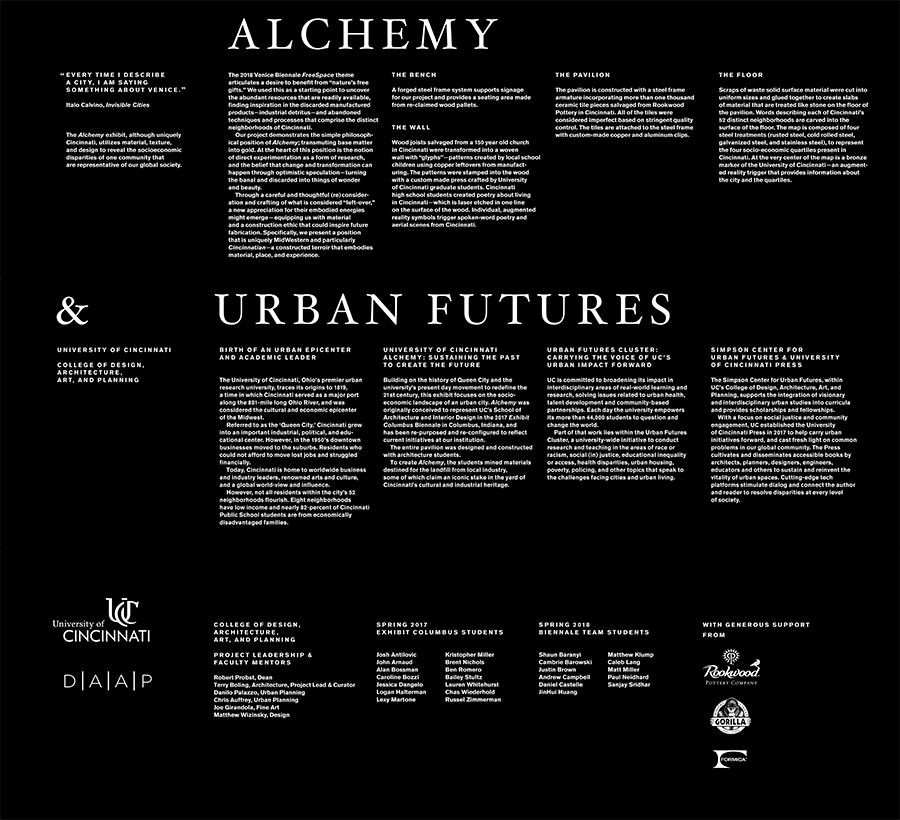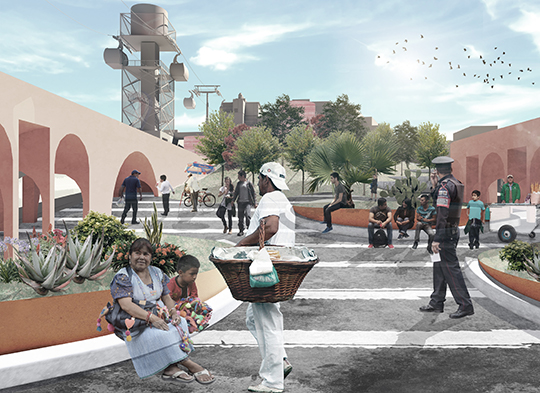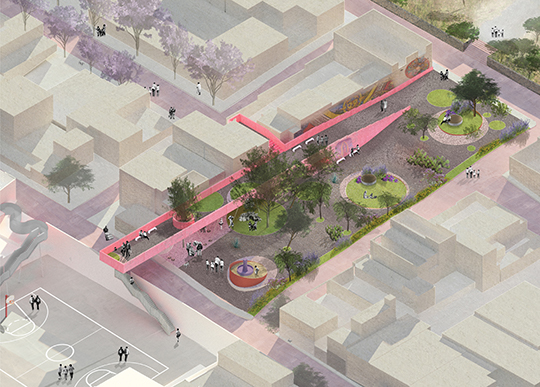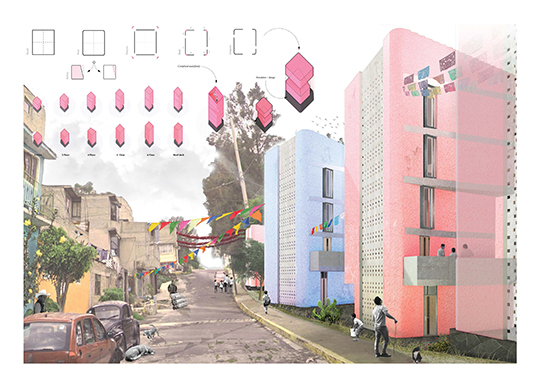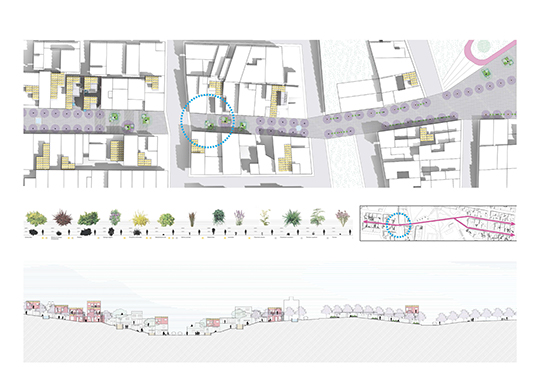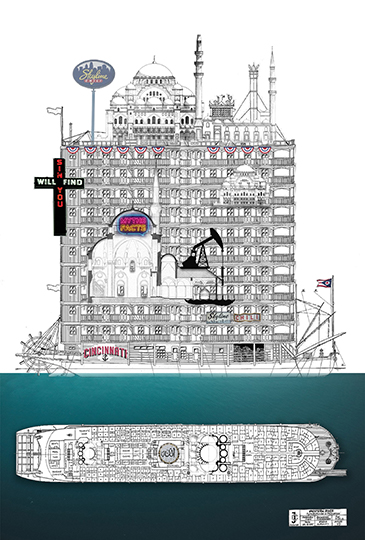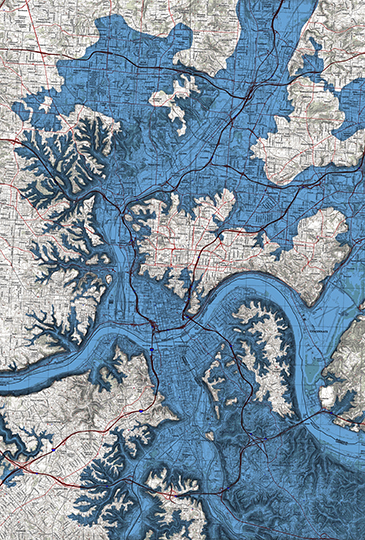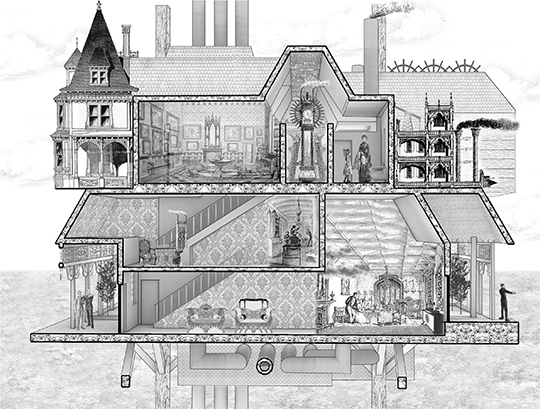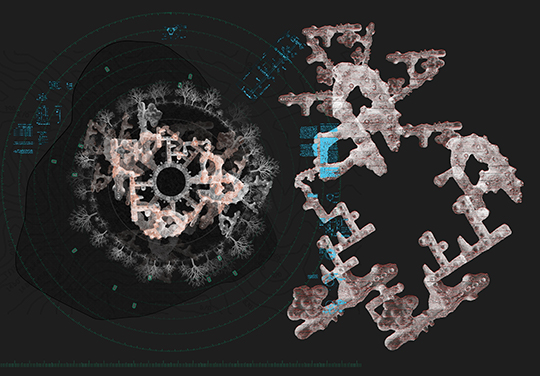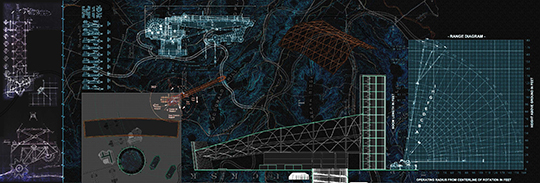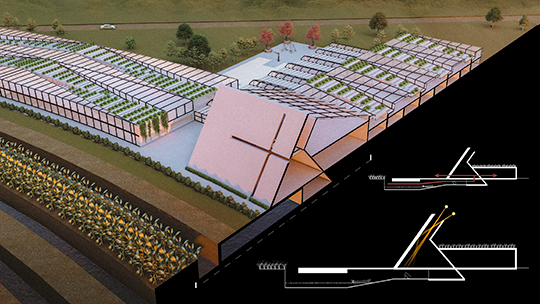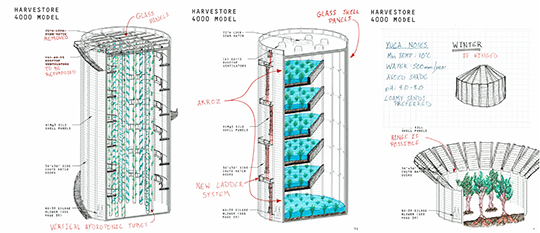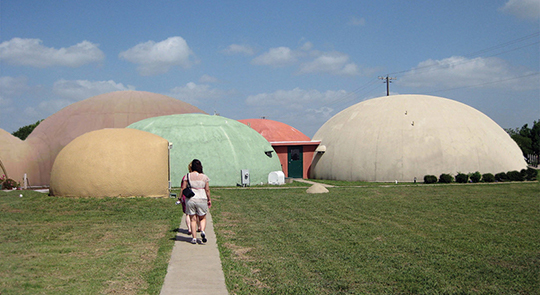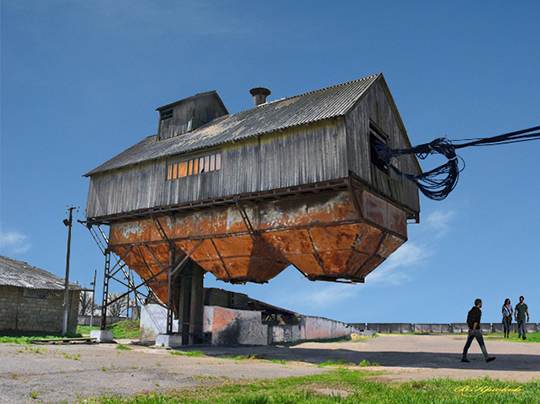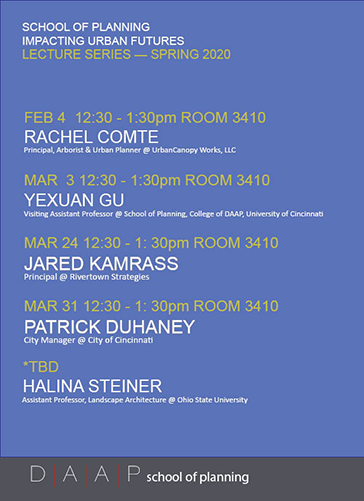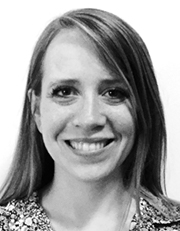Simpson Center
Scholarships, Fellowships, and Funding Opportunities
The Simpson Center for Urban Futures, within the College of DAAP, is jointly organized by the School of Architecture and Interior Design and the School of Planning. The center promotes research, discourse, and dissemination of knowledge on the future of urban communities, including but not limited to planning, design, construction, and organization. It supports the integration of visionary and interdisciplinary urban studies into curricula and provides project funding for faculty as well as scholarships and fellowships for students.
Projects
Venice Biennale
University of Cincinnati students led by architecture professor Terry Boling participated in the European Cultural Center’s “Time, Space, Existence” as part of the 16th Venice Biennale in 2018 (Freespace). The installation “Alchemy,”
was funded through the Simpson Center for Urban Futures, focusing on the societal challenges within the socioeconomic landscape of Cincinnati.
Project Studios
The Simpson Center for Urban Futures funding has supported several initiatives at the School of Architecture and Interior Design, including guest lectures over the past two years. The appointment of Visiting Assistant Professor Heather Bizon and a co-sponsorship of travel initiatives for her graduate studio and a studio lead by Associate Professor Gregory Marinic with support from UC International. Both studios will be published in books by UC Press. The Mexico City studio book “Hopeful Rebar” will be out later in the Fall of 2020 and Professor Bizon’s work will be published in the Summer of 2021.
Informal Cities
International Research Studio | School of Architecture and Interior Design
Gregory Marinic, PHD
Associate Professor | School of Architecture and Interior Design
Pablo Meninato, PHD
Associate Professor | Tyler School of Art and Architecture | Temple University
Informal Cities is a multi-year, trans-scalar—urbanism-architecture-preservation-adaptive-reuse-interiors—investigation of informal settlements in Latin America and the broader Global South. This study expands on research in Mexico, Colombia, Ecuador, Brazil, and Argentina undertaken by Dr. Gregory Marinic and Dr. Pablo Meninato. Marinic and Meninato are currently developing a book prospectus focused on formal design interventions built within informal settlements across Latin America. They intend to pursue a high-quality university press to disseminate their research and studio inquiries.
Investing their research into the classroom, Marinic and Meninato will co-lead a University of Cincinnati DAAP-based graduate architecture-urban design studio using Mexico City as a laboratory for metropolitan futures. In February 2020, eight graduate students will travel to Mexico City with Marinic and Meninato for on-site field work. The speculative student projects developed in this studio will be incorporated in a book and exhibited at a forthcoming urban design symposium hosted by the University of Cincinnati College of Design, Architecture, Art and Planning (DAAP).
Read more about Informal Cities International Research Studio
Past Futures
Advanced Design Studio, Spring 2020
Heather Bizon, M.ARCH
Visiting Associate Professor | School of Architecture and Interior Design
Projections into the future can often become mere fantasy escape. But an aesthetics of a speculative realism can produce scenarios that directly comment on our own moment in time through advancing a particular crisis into the near future. These scenarios are often great lenses for a critical engagement with contemporary problems.
In many ways architecture is always a future speculation. If the aesthetics of a future reality can be articulated to a point where the familiar becomes strangely other, these speculations can gain political influence; they can build new audiences, new constituencies. How architects have made aesthetic arguments through different mediations is of crucial importance for the discipline of architecture, both past and future.
The advanced design studio, Past Futures, explored speculative propositions of the American Midwest, where the convergence of past and contemporary issues of politics, social conditions, infrastructure, and identity provides a unique testing bed to investigate the built environment.
Lecture Series
School of Planning Lecture Series Impacting Urban Futures
*series suspended after March 3rd, 2020 due to coronavirus
Also see:
- DAAP Lecture Series: Liz Blume
- DAAP Lecture Series: Daniel Iacofano and Vikas+Mehta
- DAAP Lecture Series: Robert Lane
- DAAP Lecture Series: Patrick Piuma
School of Architecture Lecture Series
Poster text:
DAAP School of Planning Impacting Urban Futures Lecture Series Spring 2020:- Feb 4 12:30-1:30pm, Room 3410: Rachel Comte, Principal, Arborist & Urban Planner at UrbanCanopy Works, LLC
- Mar 3 12:30-1:30pm, Room 3410: Yexuan Gu, Visiting Assistant Professor at School of Planning, College of DAAP, University of Cincinnati
- Series suspended after March 3 due to coronavirus
- Mar 24 12:30-1:30pm, Room 3410: Jared Kamrass, Principal at Rivertown Strategies
- Mar 31 12:30-1:30pm, Room 3410: Patrick Duhaney, City Manager of City of Cincinnati
- TBD: Halina Steiner, Assistant Professor, Landscape Architecture at Ohio State University
Scholarships and Fellowships
Katie Horlander
PhD Student︱School of Planning
Utilizing a social-ecological systems approach to better understand the potential ecosystem services of underutilized or fringe green space in urban environments.
Yexuan Gu
Visiting Assistant Professor, Landscape Architecture ︱
School of Planning
Investigating water complexities and environmental structures for water treatment at the intersection of materials ecology and digital technology.
Heather Bizon
Visiting Assistant Professor| School of Architecture and Interior Design
Exploring the individual’s perception of space and public/private domains through new media and technology, sculpture, architecture, and film.

